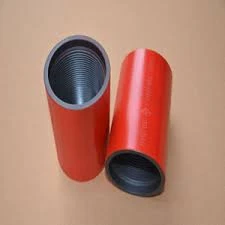- Afrikaans
- Albanian
- Amharic
- Arabic
- Armenian
- Azerbaijani
- Basque
- Belarusian
- Bengali
- Bosnian
- Bulgarian
- Catalan
- Cebuano
- Corsican
- Croatian
- Czech
- Danish
- Dutch
- English
- Esperanto
- Estonian
- Finnish
- French
- Frisian
- Galician
- Georgian
- German
- Greek
- Gujarati
- Haitian Creole
- hausa
- hawaiian
- Hebrew
- Hindi
- Miao
- Hungarian
- Icelandic
- igbo
- Indonesian
- irish
- Italian
- Japanese
- Javanese
- Kannada
- kazakh
- Khmer
- Rwandese
- Korean
- Kurdish
- Kyrgyz
- Lao
- Latin
- Latvian
- Lithuanian
- Luxembourgish
- Macedonian
- Malgashi
- Malay
- Malayalam
- Maltese
- Maori
- Marathi
- Mongolian
- Myanmar
- Nepali
- Norwegian
- Norwegian
- Occitan
- Pashto
- Persian
- Polish
- Portuguese
- Punjabi
- Romanian
- Russian
- Samoan
- Scottish Gaelic
- Serbian
- Sesotho
- Shona
- Sindhi
- Sinhala
- Slovak
- Slovenian
- Somali
- Spanish
- Sundanese
- Swahili
- Swedish
- Tagalog
- Tajik
- Tamil
- Tatar
- Telugu
- Thai
- Turkish
- Turkmen
- Ukrainian
- Urdu
- Uighur
- Uzbek
- Vietnamese
- Welsh
- Bantu
- Yiddish
- Yoruba
- Zulu
api tubing couplings
Understanding API Tubing Couplings Key Components in Oil and Gas Operations
In the oil and gas industry, efficiency and reliability are paramount. One of the critical components ensuring these attributes in well construction and operations is the tubing coupling. API (American Petroleum Institute) tubing couplings are designed to meet specific standards and requirements, making them essential for the integrity and safety of well production systems. This article delves into the significance, types, specifications, and applications of API tubing couplings.
What are API Tubing Couplings?
API tubing couplings are mechanical fittings used to connect two sections of tubing in an oil or gas well. They are manufactured in accordance with the standards set by the American Petroleum Institute, which ensures interoperability and reliability across various oilfield applications. These couplings provide a robust joint that can withstand high pressures, temperatures, and corrosive environments typically found in oil and gas extraction processes.
Importance in Oil and Gas Operations
The primary function of tubing couplings is to facilitate the safe and efficient transport of hydrocarbons from the reservoir to the surface. The following points underscore their significance
1. Pressure Resistance API tubing couplings are engineered to handle the extreme pressures encountered during extraction operations, ensuring that there is no failure or leakage that could lead to hazardous situations.
2. Corrosion Resistance Given the chemically aggressive environments, API couplings are often made from materials that resist corrosion, prolonging their lifespan and maintaining system integrity.
3. Ease of Maintenance These couplings are designed for easy installation and maintenance, reducing downtime in production operations and enhancing overall efficiency.
4. Standardization The adherence to API standards means that operators can expect compatibility with various tubing and casing products, reducing the complexities involved in procurement and installation processes.
Types of API Tubing Couplings
API tubing couplings come in several types, each suited for different applications and conditions
api tubing couplings

1. Regular Couplings These are standard couplings used in most drilling applications. They effectively join tubing strings and are designed to maintain strength under regular operational stresses.
2. Lined Couplings Used in corrosive environments, lined couplings have a protective internal lining that shields the metal from corrosive agents, thus extending the service life of the tubing.
3. Locking Couplings For high-pressure applications, locking couplings provide additional strength and stability by effectively locking the tubing sections together, minimizing the risk of separation.
4. Threaded Couplings These feature specific thread designs that ensure a tight fit between tubing sections, contributing to the overall strength and reliability of the assembly.
Specifications of API Tubing Couplings
API specifies various parameters for tubing couplings, including material specifications, dimensions, and performance characteristics. Common materials include carbon steel and alloy steel, each selected based on the particular demands of the operating environment. The key specifications include
- Outer Diameter (OD) Typically varying based on tubing sizes, ranging from 2-5/8 inches to 10-3/4 inches or more. - Yield Strength Expressed in pounds per square inch (psi), with higher yields indicating a more robust coupling. - Threads Misalignment in threading can lead to failures, hence API provides strict guidelines on thread geometry and tolerances.
Applications of API Tubing Couplings
API tubing couplings are utilized in various applications within the oil and gas industry, including
- Production Wells Connecting production tubing that carries oil or gas from underground formations to the surface. - Injection Wells Facilitating the injection of fluids for enhanced oil recovery or for pressure maintenance in reservoirs. - Geothermal Wells Serving similar functions in geothermal energy extraction processes.
Conclusion
API tubing couplings are vital components in the oil and gas industry's quest for efficiency and safety. Understanding their significance, types, specifications, and applications is crucial for professionals in the field striving to ensure effective and reliable operations. As the industry continues to evolve with advanced technologies, the role of high-quality and standards-compliant tubing couplings will remain paramount in securing successful hydrocarbon recovery processes.
-
Tubing coupling plays a significant role in the chemical industryNewsApr.03,2025
-
The Importance of Tubing Crossover in Various Industrial FieldsNewsApr.03,2025
-
The characteristics and important role of Tubing Pup JointNewsApr.03,2025
-
Characteristics and functions of Pup jointNewsApr.03,2025
-
Characteristics and Functions of Pup Joint PipeNewsApr.03,2025
-
Application of Coupling Casing in Various ScenariosNewsApr.03,2025







